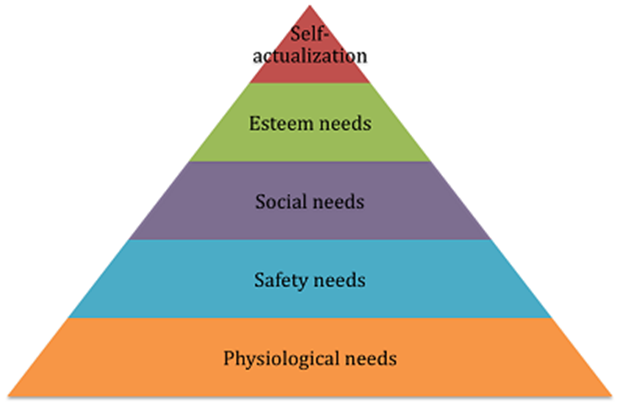Posts by John Dudovskiy

The most noted advantages of viral marketing include cost advantages, its non-interruptive manner, high level of scope, potential of reaching large numbers of customers, effective customer targeting, and high and rapid response rate. Cost Advantages The majority of authors addressing the topic of viral marketing praise the cost advantage benefits of viral marketing campaigns. It has been stressed that “a viral marketing campaign has a relatively low cost for development, depending on its sophistication, and is within budgetary constraints of many city marketing organisations” (Wober, 2002, p.294). Authors mention specific case studies where viral marketing campaigns with modest budgets were able to significantly contribute to the levels of brand recognition and brand loyalty. Specific viral marketing campaigns initiated by Mazda, Nike, Virgin Blue, and Old Spice can be mentioned to illustrate this point. Non-interruptive Marketing Absence or lack of intrusion and interruption has been noted in the literature as an additional substantial advantage of viral marketing. It has been noted that viral marketing campaigns “tend to be non-interruptive, so they enable consumers to choose to interact proactively with a communication, or not, rather than be passively dictated to” (Kirby, 2012, p.97). Lincoln (2009) specifies this aspect of viral marketing to be the major factor contributing to its success, and advises marketers to integrate elements of fun within viral marketing campaigns. High Level of Scope A high level of scope of the impact of viral marketing implies its potential to reach large numbers of customers in a global scale during a short period of time. This specific advantage of viral marketing has been stressed by Thorne (2008), Donovan and Henley (2010) and others. Due to the fact that it is facilitated through internet, viral marketing recognises no geographic boundaries and time restrictions in terms of reaching the target customer…

Strategic Human Resource Management (SHRM) can be explained as “a general approach to the strategic management of human resources in accordance with the intentions of the organisation on the future direction it wants to take” (Giri, 2008, p.21). In simple terms, SHRM attempts to achieve a high level of integration between corporate strategy and HRM. SHRM is perceived to be a much wider concept than traditional HRM in a way that SHRM addresses the impact of a range of factors on HR practices. Moreover, four major distinctive points of SHRM from traditional HRM can be specified in the following manner: a) SHRM concentrates on the level of efficiency of individual employee performances b) The importance of regularly introducing changes and organisational re-engineering is acknowledged within the framework of SHRM c) SHRM recognises the role of effective organisational leadership d) SHRM concentrates on team learning and sharing knowledge within organisations Evolution of HRM into SHRM, and its increasing role in organisational performance owes to intensifying level of competition in the marketplace. In other words, with the level of competition in the market becoming intense for almost all industries, businesses are actively striving to explore additional sources of competitive advantage. From this perspective, company human resources are proving to be an effective source of competitive edge through their creativity, and thus strategic approach to HRM is required in order to develop and sustain this important competitive edge. There are many examples in business world that illustrate positive implications of adopting strategic approach to HRM on organisational performance. For example, in UK based John Lewis plc 81,000 employees are called as Partners (Our Employees, 2012), and accordingly company human resources are treated as strategic partners in the achievement of long-term aims and objectives. Managers are recommended to approach HR aspect of the business…
By John Dudovskiy
Category: HRM

Employee recruitment can be explained as a process of finding and attracting job candidates that are suitable for the position to be filled. Once a number of candidates are short listed by the end of recruitment, the most suitable candidate(s) will be selected to be hired by the company. Employee recruitment process may comprise the following stages: Stage 1: Recruitment planning Recruitment process starts with recruitment planning with the analysis of the numbers and sufficiency of employees in order to achieve long-terms aims and objectives of the company. Importance of recruitment planning can be explained in a way that failure to deal with it appropriately can compromise long-term growth prospects for the company. Once the recruitment planning has identified the number of positions to be added in the company, job description and person specification for the position needs to be formulated in a clear and unambiguous manner. Stage 2: Identifying recruitment sources Recruitment sources can be divided into two groups: internal and external. To put it simply, internal recruitment involves recruiting candidates within the company, whereas external recruitment is recruitment of candidates not currently employed by the company. External sources of recruitment include educational institutions, data in job centres, job agencies, and even competitors. Internal sources of recruitment, on the other hand, include employee files and databases. Identifying a suitable recruitment source is important because the level of suitability of candidates for the job depends on the type of the recruitment source selected. Stage 3: Generating candidates Once a suitable recruitment source has been identified an adequate pool of candidates need to be generated. Candidates from external recruitment source can be generated through advertisements in the media, campus recruitment or with the assistance of relevant agencies. Generating candidates from internal recruitment source, on the other hand, can be…

Employee training and development can be specified as an important aspect of HRM and these importance further increases in times of global recession. To put it simply, times of global recessions and consequent challenges for businesses in many levels puts extra pressure for management at all levels to be more adaptive, flexible and focused. Accordingly, only highly qualified and motivated employees at all levels would be able to safeguard their company from becoming a history in times of economic uncertainties. Commitment to employee training and development in an effective manner can provide businesses a set of advantages such as high level of employee creativity, increased level of motivation to perform duties at work. In devising and implementing employee training and development programs individual learning styles of employees need to be taken into account and addressed in correct manner. Generally, learning styles are divided into seven catagories: visual, aural, verbal, physical, logical, social, and solitary. Furthermore, the provision of training and development programs for the workforce needs to include the principles of classical conditioning. Specifically, known as learning by association, conditioning theory highlights the role of stimuli and unconditioned response to it during the learning process. A high level of importance of investment in employee training and development in times of global economic recession is appropriately acknowledged by Emirates Airlines, one of the main players in the global airline industry. Specifically, amid growing challenges for the airline industry due to the global economic crisis, Emirates Airlines employee training and development programs and initiatives including Learning Resource Centres, My Learning Zone portal, and annual professional development courses were not impacted by company cost-saving programs. Organisational managers are recommended not to compromise the quality of employee training and development due to cost saving considerations in times of global economic recession. Such a practice…

Employee motivational tools can be divided into two categories: tangible and intangible. Tangible motivational tools include money, holidays, and other tangible perks and benefits in the workplace, whereas intangible tools of employee motivation include verbal and written acknowledgement of employee contribution, celebration of memorable dates such as birthdays, anniversaries and achievements, developing effective work environment etc. A major internet company, Google can be mentioned as a model workplace where design of workspaces and working environment has been developed in a way that they have positive impact on the level of employee motivation. Specifically, Google offices around the world are have many unique features in terms of design and decorations and these are aimed at increasing the level of employee motivation and creativeness. Organisational managers are recommended to recognise the level of employee motivation as one of the most crucial factors of competitive advantage in the market. Moreover, managers are recommended to use both; tangible, as well as, intangible motivational tools need to be used by management in an effectively integrated manner in order to benefit from highly motivated workforce.

Hertzberg’s (1959) Motivation and Hygiene factors represent a prominent model in the area of employee motivation. In this model employee motivation is found to be impacted by two major factors: motivators and hygiene. Hygiene factors such as company policies, compensation and working conditions do not necessarily motivate employees; however, their absence is most likely to cause dissatisfaction. Motivators, on the other hand, include the level of achievement recognition by management, career progress opportunities, and responsibilities associated with the position and these factors can be manipulated with in order to achieve higher level of employee motivation. Importantly, managers need to be able to distinguish between motivators and hygiene in their organisations, and they need to be able to achieve a positive impact of both factors. Intrinsic motivation- the self-generated factors that influence people to behave in a particular way or to move in a particular direction. These factors include responsibility (feeling that the work is important and that having control over one’s own resources), autonomy (freedom to act), scope to use and develop skills and abilities, interesting and challenging work and opportunities for advancement. Extrinsic motivation- what is done to or for people to motivate them. This includes rewards, such as increased pay, praise, or promotion, and punishments, such as disciplinary action, withholding pay, or criticism. McClelland’s theory (1961, p.214) assumes that people have three innate needs: the need for achievement, the need for affiliation, and the need for power. According to Adams’ theory (1965, p.82) employees always strive for equity between themselves and other workers. Equity is achieved when the ratio of employee outcomes over inputs are equal. Victor Vroom’s theory states, (1964, p.122) that employee effort will lead to performance and performance will lead to rewards. Rewards can be either positive or negative. Positive rewards will motivate employees, while negative rewards…
By John Dudovskiy
Category: HRM

The theoretical framework of Maslow’s Hierarchy of Needs (1943) is considered by many to be the most substantial theory in the area of human motivation. Maslow (1943) categorises human needs into the five different levels and states that are evolved in a sequential manner. Maslow’s Hierarchy of Needs Psychological needs include basic human needs that are necessary to sustain life such as food, clothing, sleeping etc. Satisfaction of psychological needs in individual results to an emergence of safety needs that include being free of fear or deprivation of basic needs. The next level of needs is social needs that follow after the satisfaction of safety needs. Namely, social needs relate to the sense of acceptance by various groups. Esteem needs, emerging in the next stage “motivates a person to contribute his or her best to the efforts of the group in return for the numerous forms of reward that recognition can assume” (Montana and Charnov, 2008, p.239). Adequate satisfaction of esteem needs makes self-actualisation needs predominant. This stage of need is closely associated with maximising an individual’s potential regardless of its nature. The practical implications of “Hierarchy of Needs” are that managers must adopt an individual approach when motivating their subordinates addressing the immediate needs of each individual employee. According Maslow (1943) in their practices organisational managers need to address more immediate needs of employees in order to achieve the highest level of motivation. In other words, trying to appeal to self-esteem needs of an employee that has not satisfied his belonging needs is not the best approach in terms of achieving a high level of employee motivation. References Maslow, A.H. (1943) “The Theory of Human Motivation” Psychological Review, 50(4) Montana, P.J. & Charnov, B.H. (2008) “Management” Barron’s

Employee motivation can be defined as “influencing others in a specific way towards goals specifically stated by the motivator, conforming within organisational constraints” (MacKay, 2007, p.21) and the level of motivation of the workforce represents one of the most critical factors affecting organisational performance. One of the main reasons for increasing importance of motivation in the workplace relates to the role of human resources becoming greater in ensuring long-term growth for the business. Employee motivation is an essential component of a successful business practice. No matter how appealing products and services a company is providing, how efficient are company’s business and marketing strategy and what size of budget does a company have to operate, low morale and lack of motivation in employees could be a major problem for companies who aim to make a profit in marketplace. It has been argued that while each individual has a general idea of what motivation is, these ideas differ from each other. One of the most comprehensive definitions of the term motivation is offered by Business Dictionary (2012) as internal and external factors that stimulate desire and energy in individuals to be interested and committed to a position, role or subject in a continuous manner, and exhibit persistent effort in achieving a goal. Alternatively, motivation can be defined as “a process of stimulating someone to adopt a desired course of action” (Kumar, 2008, p.12), and the level of employee motivation can be justly specified as one of the major factors contributing to overall organisational competitiveness It has been also said that “all employees have unique needs that they seek to fulfil through their jobs. Organisations must devise a wide array of incentives to ensure that a broad spectrum of employee needs can be addressed in the work environment, thus increasing the likelihood of…

Being updated with the relevant legislations is the main responsibility of organisational managers in dealing with the legal aspects of firm’s information system. Moreover, major legal areas of information systems to be addressed by managers include Data Protection Act(1998), appropriate dealings with intellectual properties, abiding to relevant contractual obligations and safeguarding the firm from breaching relevant criminal and civil laws. Main legal requirements of dealing with information in UK are specified in Data Protection Act (1998) and these are formulated through eight main principles. Neglecting or abusing these principles can result in civil or criminal charges for firms involved. The present age of information is causing the importance of management information systems to increase at a rapid pace and this tendency is expected to continue in the foreseeable future. Moreover, today firms have an opportunity of increasing the level of their competitiveness through increasing the level of information systems in decision making at strategic and operational levels. However, there is a set of important security, ethical and legal implications of management information systems discussed in this paper that should not be neglected by organisational managers. Neglecting or abusing these security, ethical and legal aspects of information systems can result in highly negative implications for the company such as damage to the brand image, loss of customer loyalty, or even civil or criminal prosecution in some instances.

It is important to distinguish between ethical and legal implications of information system management in a way that unlike legal issues, ethical issues do not necessarily result in the organisations being punished by law; nevertheless, unethical behaviour can have highly negative implications for the society. Ethical implications of information system management cover a wide range of issues such as disclosure of information to third parties, accuracy of information, information ownership issues, appropriate access to information and others. Moreover, increasing popularity of social networking sites such as Facebook, Twitter and YouTube in the global scale are proving to be another source of information system management ethical issues. Specifically, “a number of information system companies have sprung up to provide products designed to monitor social media” (Stair and Reynolds, 2011, p.30) and this practice is attracting criticism from various parties for being contradictory form ethical viewpoint. Critics argue that information posted in social networking sites are private and firms do not possess ethical rights to use this information for marketing and other purposes. References Stair, R & Reynolds, G. (2011) “Principles of Information Systems” Cengage Learning
